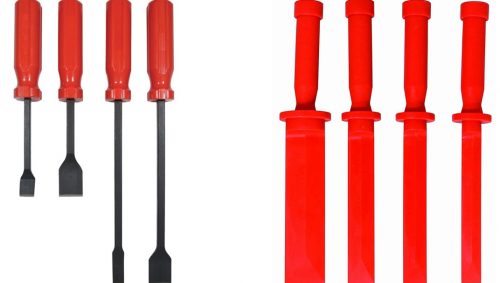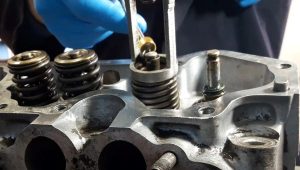Disassembling and cleaning a cylinder head
After removal, it is necessary to disassemble and clean the cylinder head for the inspection and repair process to be more efficient. You cannot have a good repair on the cylinder head if there are pieces of sludge and dirt that cover the damage or constantly fall into the inspection and repair area. Cylinder head cleaning usually involves mechanical cleaning with a scraping tool, such as a gasket scraper. Aluminum heads are scraped with a non-metallic tool such as a plastic or silicone scraper.








